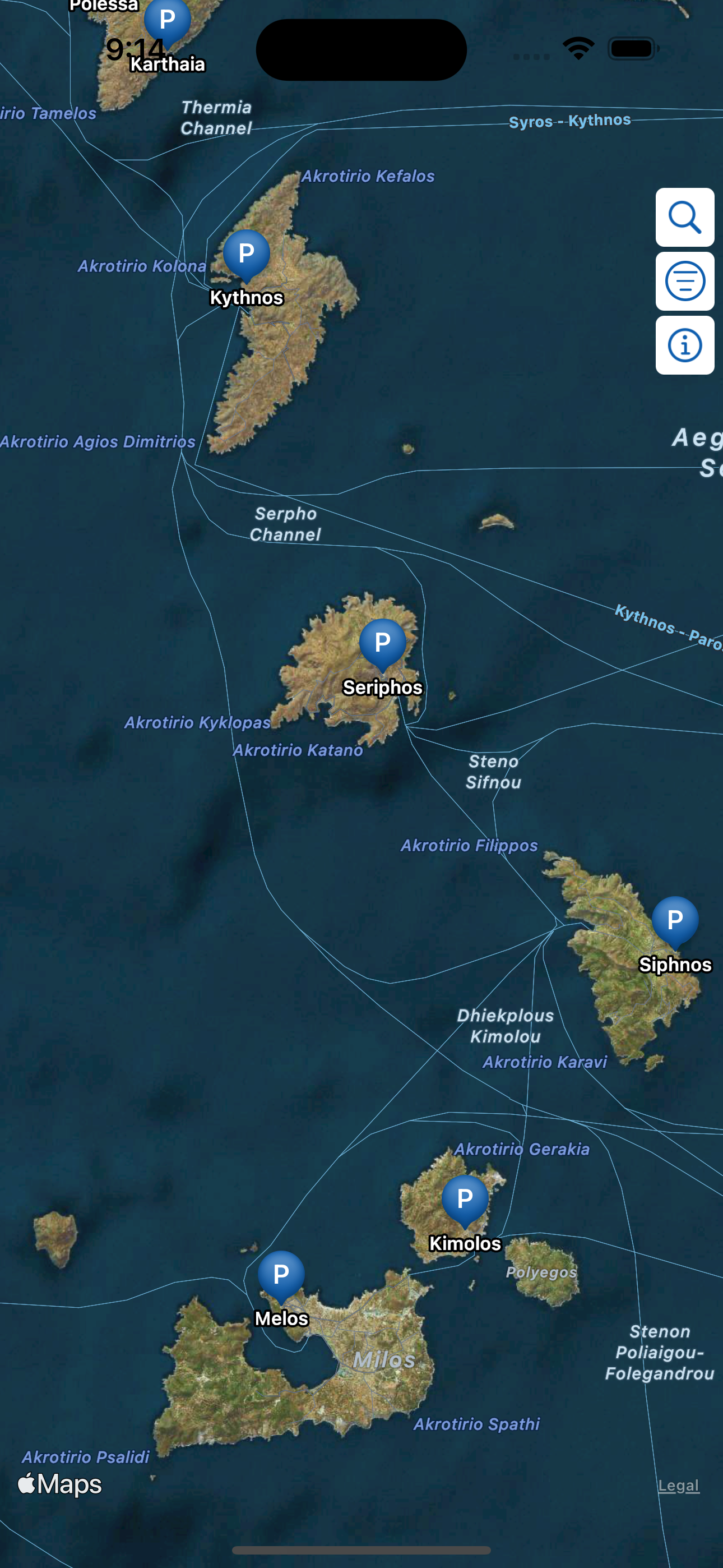Cyclades Island Updates
Updates and confirmations of the Polis locations for Kythnos, Serifos, Sifnos and Melos are provided.

This summer 2023 included a trip the Cyclades islands of Kythnos, Serifos, Sifnos and Melos. Between wonderful vistas, swims and meals, visits included the local archeological ruins and museums. The physical remains are few on Kythnos and Serifos, and increasingly abundant on Siphnos and Melos, respectively. The history on each island, however, is rich and deep. In addition to an identified polis on each island, they have been inhabited for millennium and were all important sources of minerals and ore from ancient times into the early 20th century. Many of their ancient walkways crisscrossing the islands are now trail-marked for trekking.
The visit allowed for a boots-on-the-ground confirmation of the polis coordinates, as reported in the digital Inventory. Based on this reconnaissance, surprisingly, 3 of 4 polis were relocated within their islannds. The new locations are included in the 1.6.4 version of the Polis-Inventory app, released in August 2023.
The following describes the rational for these changes.
Kythnos
The Hora of Kythnos is charming and lively. It also possesses a delightful new archeological museum, including finds from the ruins of Vyrokastro located on the acropolis just south and rising above the northwestern beach of Apokrousi. The Inventory describes the urban center of the polis to be on the northwestern side of the island, without naming it, yet describes the findings at Vyrokastro.
Prior Polis Location: The Hora of Kythnos.
New Polis Location: The acropolis at Vyrokastro.
Serifos
The Hora of Serifos, sitting dramatically perched on the steep, rocky hillside above the port of Livadion, is perhaps the most interesting and beautiful of the four islands. The archeological museum resides in Livadion. Unfortunately, we missed its open hours. Serifos has been badly plundered of artifacts over the centuries and so there is not much at all archeologically to see aside from the numerous and scattered 19th century old iron mines. Serifos possesses a dramatic landscape and on the southwestern side we did enjoy the small but well-maintained ruin of a 6th century BCE marble watchtower situated high into the mountains with panoramic views of the sea below. Prone to pirate attacks, Kythnos, Serifos and Sifnos all possessed sophisticated ancient networks of watchtowers for protection.
The Inventory states there is very little evidence of the urban center of the polis as it lies unexcavated beneath the Hora.
Prior Polis Location: The prior location was seemingly randomly located in the mountains above the Hora, probably due to a lack of precision in the location coordinates themselves.
New Polis Location: The main, administrative square on the acropolis of the Hora.
Sifnos
Compared to Kythnos and Serifos, Sifnos possesses an abundance of archeological remains consisting of ancient settlements, mines and nearly 75 watchtowers. The recently completed excavation of the Myceanean ruins located at the Citadel of Agios Andreas are excellent as is its museum. Classical ruins are abundant with the most prominent found in the small citadel of Kastro, which also houses a small archeological museum, and includes a reference by Herotodus mentioning Kastro as the flourishing capital of Sifnos in the 6th century BCE. The Inventory states the location of the polis was on the east side of the island without offering further precision.
Prior Polis Location: The previous location in the digital Inventory was on a western mountain top south and above the port in Kamarai.
New Polis Location: Relocated to to coincide with the acropolis in Kastro, as this is probable, but is not assured.
Melos
Melos is the largest and most famous of the four islands and correspondingly possesses the richest archeological record. In classical times, Melos suffered infamously in their failed attempt to resist Athens, as described by Thucydides. The museum resides in the Hora of Melos and includes a replica of the famous Venus de Melos now displayed in the Louvre in Paris. Minoan ruins may be found on the northeastern portion of the island at Phylakopi near Pollonia, while the classical Greek and Roman ruins reside in, under and widely around the Hora of Melos itself. The Inventory describes the urban center but does not provide a precise location while the digital Inventory locates the polis in the Hora of Melos. Given the spatial extent of significant ruins surrounding the Hora there is no compelling reason to adjust this position.